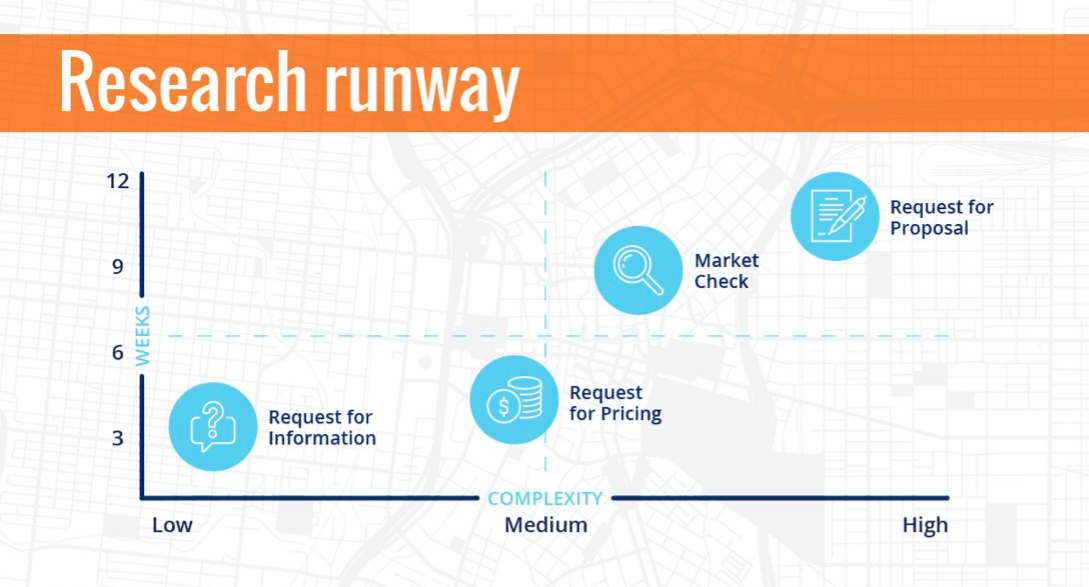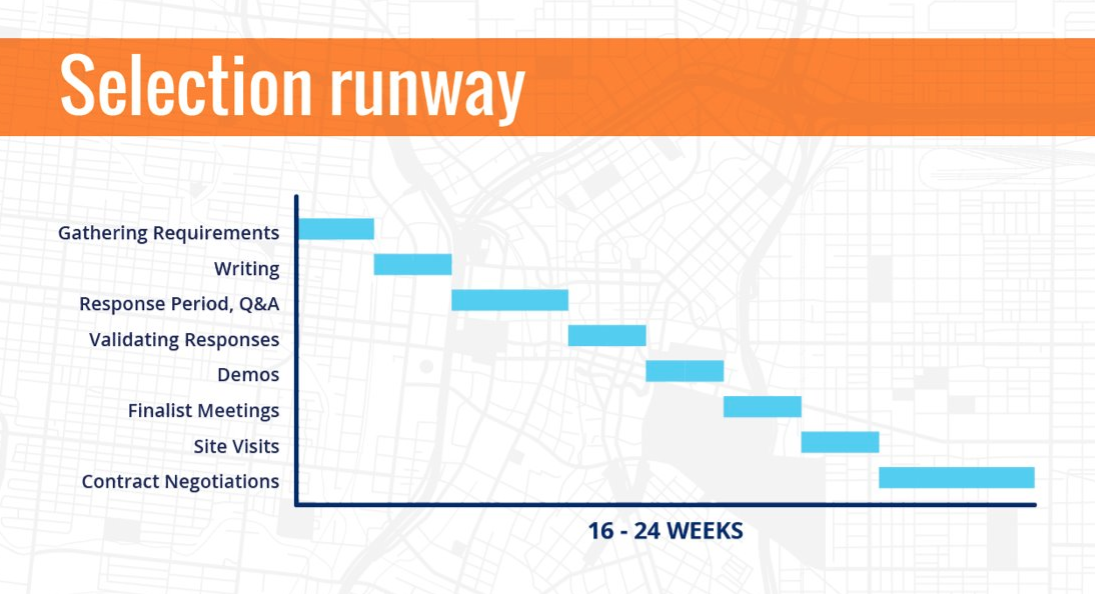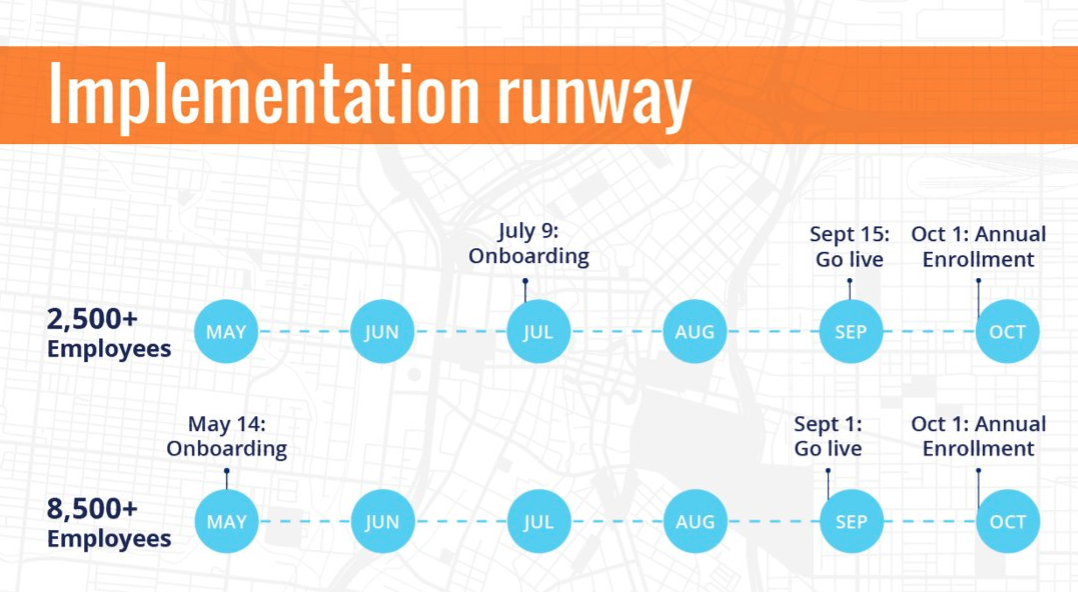Thinking backwards could be the key to planning and implementing a successful RFP.

Preparing an RFP can be a big undertaking, especially if you’re looking for something as specific and complex as benefits administration technology. Whether you’re pulling everything together yourself or working with an advisor, timing considerations should be at the top of your list. If you start too late, you’re likely to miss crucial steps in the process. You may also risk vendors excluding themselves from consideration due to their implementation timelines.
So, where should you start? Backwards.
Research Runway
Gathering information is the first step to backing into finding the right technology partner. Here are a few steps to hit on your journey.
- Request for Information – start collecting information from websites, white papers, brochures, etc. You could also consider sending an actual Request for Information (RFI). But be careful not to scare away potential fits by making a burdensome or ineffectual RFI.
- Request for pricing – this isn’t a specific proposal, as that will come later. Gather the high level cost drivers and ranges of pricing. See what solutions are within your budget…or begin to set the realistic budget.
- Market check – this step can take the form of talking directly to vendors and ensuring you have the latest info. Due to the complexity of these HR projects, you might also get updated info on integrations (as these things change over time). You’ll need all of this as you plan for internal stakeholders’ needs.
- Request for proposal – this is the formal process that leads to a contract.

Selection runway
You've done your research, you know what's going to happen after you sign, now, it's time to make the decision. We breakdown each step to selecting a partner so you know exactly what to expect.

- Gathering requirements – don’t underestimate the time to gather requirements from your stakeholders. Start high level and work down.
- Write the RFP – the more info you include about you, the better responses you’ll get. Be transparent and you’ll find a partner.
- Response period – give ample time, like 2-3 weeks. Remember your vendors have many RFPs they are responding to. Be ready to answer their questions quickly.
- Validate responses – as you start to evaluate/score responses, follow-up to clarify responses and ensure you totally understand the meaning of each response. If you create a cost-model, you might share with them to make sure you ‘got it right’.
- Demos, finalist meetings, site visits – these can be complicated to schedule, so give ample time for scheduling. The more people you have involved, the more scheduling head-aches you have.
- Contract – legal is now officially involved. Make sure you have good partners here and you understand their level of involvement.
Implementation runway
Ok, you sent out a contract and now you're wondering what happens next? Here’s a typical timeline of activities that happen after the contract is signed — the stage we call “implementation.” Just remember, the larger the organization, the longer implementation takes.

Learn more about finding the right benefits technology partner here.
Or, if you'd like some sample RFP questions to get you started, download our Art of the RFP guide below with over 200 sample RFP questions.



.png)